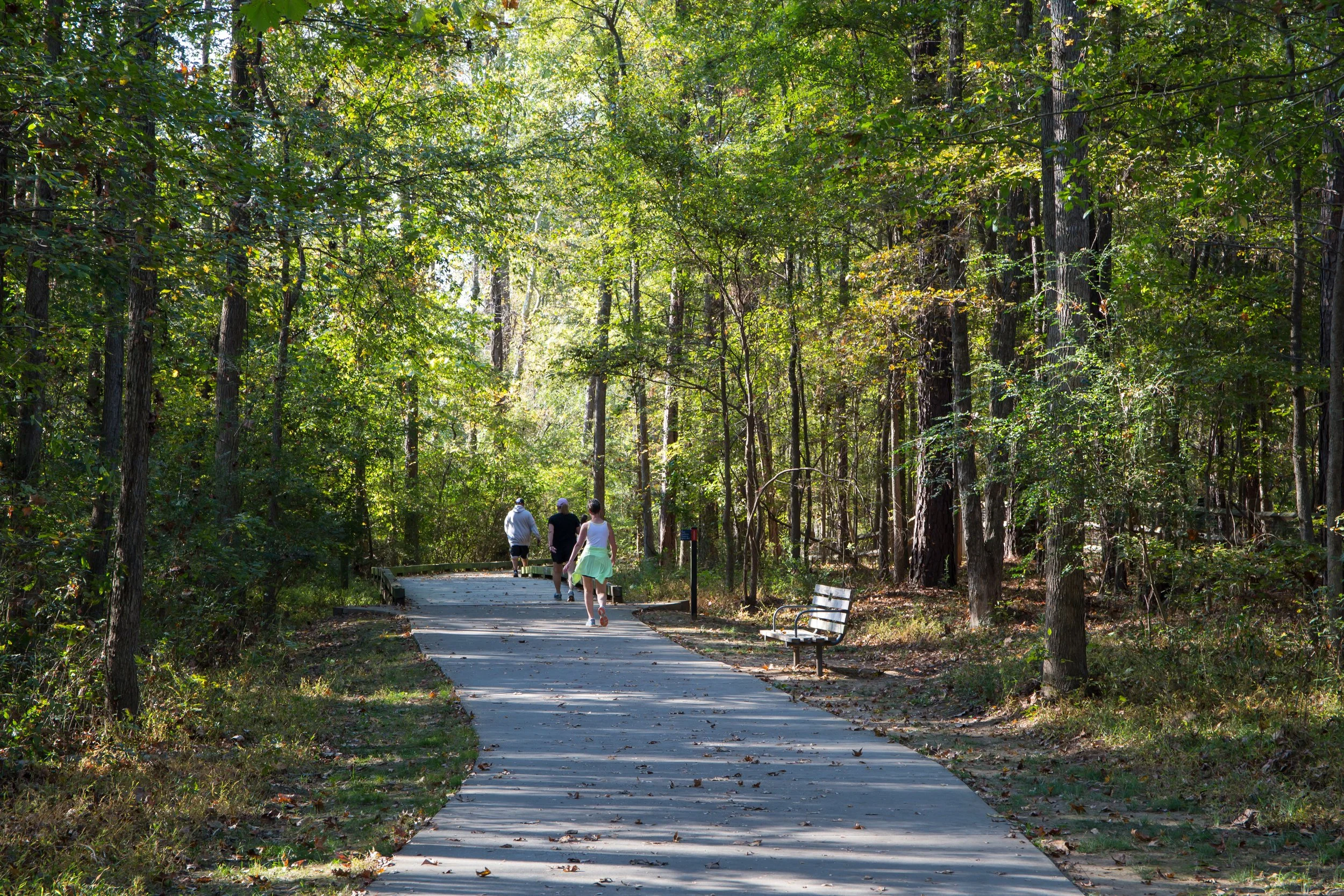Central Arkansas Regional Greenways Master Plan boosts transport, fosters growth.
By Julie Kelso
If walkability and connectivity are the keys that can unlock the potential of a downtown corridor, an urban neighborhood or even an entire region, one would be hard-pressed to find a key ring that jingles louder than the Central Arkansas Regional Greenways Master Plan. This plan, which will connect four counties and 19 communities through an expansive system of trails, will ultimately provide an active transportation greenway network for the heart of Arkansas and bring a wealth of potential to the area.
By incorporating existing trails and proposing miles of new ones, this plan embodies the concepts of new urbanism by encouraging walkability, connecting older neighborhoods to new and unlocking economic potential for trail-oriented developments while allowing each community to promote their individual identity. Metroplan understood this potential, which is why the federally designated Metropolitan Planning Organization for Central Arkansas committed to a substantial investment in developing such a network in early 2020.
Daniel Holland, Metroplan transportation project manager, says Metroplan has seen firsthand what successful trails can do for communities. Through fact-finding trips throughout a variety of regions with successful trail systems, the picture became clear. There was an opportunity to realize the benefits of providing residents with more choices in transportation.
Over the span of two years and through a pandemic, Crafton Tull and Toole Design worked to lay a foundation for what this greenway plan would look like. Early in the planning process, the project team identified eight guiding principles that informed the route development process to create a unified network across the region. These principles state that each network segment must be transportation-focused, physically separated, inclusive, consistent, safe, context sensitive, high quality and well connected.
Ultimately, the Central Arkansas Regional Greenways Plan identifies approximately 222 miles of trail network at an estimated cost of nearly $280 million. Metroplan officially adopted the final report in May 2023, which identified six specific corridors that will each connect several communities and provide both recreation and the option of active transportation.
These six corridors include the Southwest Corridor, already in development before the greenways plan, which uses an abandoned railroad corridor to connect Little Rock Central High School to Hot Springs National Park and connects Little Rock to Shannon Hills, Bryant and Benton along its path. The Central Beltway Corridor navigates the oldest blocks of downtown Little Rock westward along the Interstate 630 corridor to newer developments in West Little Rock. The Northwest Corridor departs the Arkansas River Trail and traverses White Oak Bayou through North Little Rock to Maumelle before continuing north through Mayflower to Conway, navigating both urban and rural areas. The Northeast Corridor connects communities and destinations from the Arkansas River Trail in North Little Rock through Sherwood, Jacksonville, Cabot, Austin and Ward, providing a seamless pathway from one city to the next. The East Corridor to Lonoke and Southeast Corridor to Wrightsville function in a similar fashion through predominantly rural areas and result in notable portions of their corridors consisting of signed routes with critical separated facilities proposed in areas of dense population.
The greenways traverse the varied landscapes in both urban and rural contexts of the region, with views of the highest peaks and the soothing sounds of rushing water present along every corridor. Each corridor has its own character and major destinations, which not only provides individually for each of the segments, but also an option for those looking to use the trail system for recreation.
What started as an ambitious vision is becoming reality, with several planned segments in design and some in construction. The Southwest Trail from the Clinton Library to Sixth Street is under construction, while segments in both Pulaski and Saline counties, including Benton, are under or beginning construction. Along the northeast corridor, Sherwood, Cabot and Austin have projects either under design or bidding for construction. Segments of the East Corridor and Southeast Trail are also in development.
What does this mean for Central Arkansas? Simply put, this means that the communities in the region and the landscapes between them could look very different in the decades ahead. Greenways may breathe new life into old neighborhoods and expand opportunities for healthy lifestyles and recreation.
Not only will the implementation of the greenway change the landscape, but it also holds the potential to spur economic growth for areas along this network that might have never seen an avenue for such. Forgotten areas may one day be bustling with walkers and joggers alongside people on bicycles. The potential for further placemaking and trail-oriented development along the greenways can be transformative for neighborhoods, adding amenities not currently available for several communities throughout the network.
There is also the potential for an improved quality of life in general. Central Arkansas has been automobile dependent for decades but owning multiple cars is not always an option for residents. A connected system of greenways provides safe and direct paths to major employment hubs, grocery stores and essential services in the absence of a car. The opportunity for socialization is another benefit of a connected system of this nature. As the greenway weaves through housing, parks and retail hubs, travelers will stop to enjoy the scenery, grab a cup of coffee or window shop. This is where we run into our friends and neighbors, fostering those important community connections.
The vision has been cast and funding has been outlined. Now is the chance for communities to use this opportunity to partner in the implementation of this network. With a plan for a system such as this for Central Arkansas, Metroplan has ensured that there will be active transportation projects continuing for decades to come, and instead of communities being left behind, they will be moved to the forefront of quality development in the region by handing them the keys to connectivity and walkability.
Julie Luther Kelso is a landscape architect and city planner serving as the Vice President of Planning with Crafton Tull.


